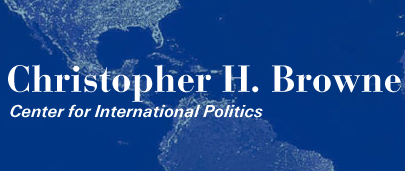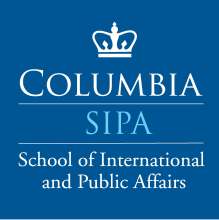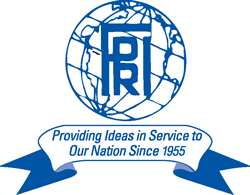By Alex Yang
14 years after the terrorist attacks of September 11th, the danger of terrorism has not waned. Even after the killing of Osama bin Laden, the threat of transnational terrorism remains a constant, as other groups rise to the forefront of international security debates. Just last year, the Paris attacks, and other atrocities committed by the Islamic State of Iraq (ISIS) remind us of the clear and present danger of terrorism. This global security threat is compounded by the uneasy status quo of nuclear security in the world. Decades after the Cold War, nuclear proliferation might have slowed slightly, but nuclear technology is in great danger of exploitation. One hardly dares to imagine a nuclear terrorist attack on one of our major cities; yet, it is an ever-present ominous possibility if states continue to stubbornly defend their present protective measures.
The status quo is far from effective. States currently adhere to a silver-bullet solution of guarding stockpiles of nuclear material. Nuclear weapons require highly enriched uranium or plutonium, which are rarely found worldwide. In theory, it is a cheap and therefore attractive option for governments to centralize static security measures onto a few locations. In reality, however, the situation is riskier than we would like. Much of the world’s nuclear material is used for civilian and military purposes, which means that transportation of such material occurs, and often. These incidents provide ripe opportunities for terrorists to obtain materials for nuclear weapons through hijacking or raids. In many nuclear sites around the world, the security measures in place for plutonium or highly enriched uranium comprise little more than a wire fence and a night watchman. Further, the resolve of terrorist groups far exceeds the current capabilities of states at nuclear defense; even before Osama bin Laden’s death, al-Qaeda had been seeking nuclear weapons for years. Indeed, bin Laden once stated that it was a “religious duty” for al-Qaeda to acquire nuclear and chemical weapons. The current situation is more than volatile – it is a disaster waiting to happen.
Even when security measures are in place, who guards the guards? The nuclear black market as we know it today originated in Pakistan. Dr Abdul Qadeer Khan, the pioneer of Pakistan’s nuclear weapons program, ran a nuclear distribution program that not only spanned Europe, Asia and Africa, but also sponsored nuclear weapons programs in rogue regimes like North Korea and Iran. The insider threat is real – and the status quo cannot hold when states have to guard against dangers both external and internal.
There is no ambiguity about the appropriate approach to take. Policymakers all want the same thing – to avert nuclear Armageddon. What they must also realize is preventing nuclear terrorism lies well within their capabilities. To execute a successful terrorist attack, a terrorist group has to complete necessary tasks such as recruiting trained nuclear scientists, obtaining the actual material, and smuggling a bomb across borders. The key to disrupting this process is an integrated defensive strategy that combines elements of counterterrorism and homeland security. For example, policymakers could consider tripling the number of guards at nuclear facilities, and simultaneously strengthen border controls by providing simple resources such as radiation detectors. The job of terrorists in carrying out an attack is now doubly difficult – both in obtaining nuclear material and in smuggling it across borders.
Policymakers might conclude that total prevention is largely unattainable. However, deconstructing the task of taking the fight from nuclear terrorists down to its constituent components reveals an entirely different story. Engaging in preemptive actions that reduce the chances of each component’s success – increasing sting operations to capture both rogue scientists and stolen nuclear materials, for example – add up. Each set of preemptive actions are relatively simple to carry out, and they chip away at terrorists’ chances of success. Not only do terrorists face difficulty in every step of their plan, they might be convinced to abandon it altogether.
Those who oppose this approach might argue that costs could increase too drastically – but what they fail to consider is that this integrated approach against nuclear terrorism draws its strength not from the generation of entirely new institutions, but the efficient utilization of current ones. Institutional and bureaucratic changes would be required, but these are premised upon the existing foundation of a robust counterintelligence apparatus. The National Counter-Proliferation Center, working under the Office of the Director of National Intelligence was blocked from coordinating efforts to secure nuclear material to prevent territorial clashes with the Department of Energy in 2004. Often, the only real obstacle to efficient nuclear security is bureaucratic red tape – which should be a non-issue, when we consider the severity of the stakes.
Ultimately, the prevention of nuclear terrorism lies in proactive and preemptive action. Actions cannot be taken based on the worst-case scenario – the plots of terrorists are imperfect, as are they; they can be destabilized at any point of an undoubtedly multi-faceted and complicated strategy. The onus is on to governments, then, to empower institutions and enforcers with the capabilities and knowledge to exploit the weaknesses of terrorist strategies. By driving the policy edge into the planning process of the terrorists, we invariably reduce the risk of them exploiting our own weaknesses.
Alex Yang is a freshman at the University of Pennsylvania.

















